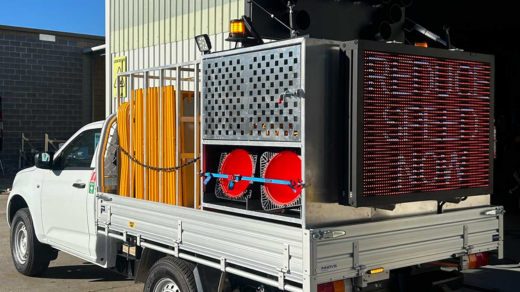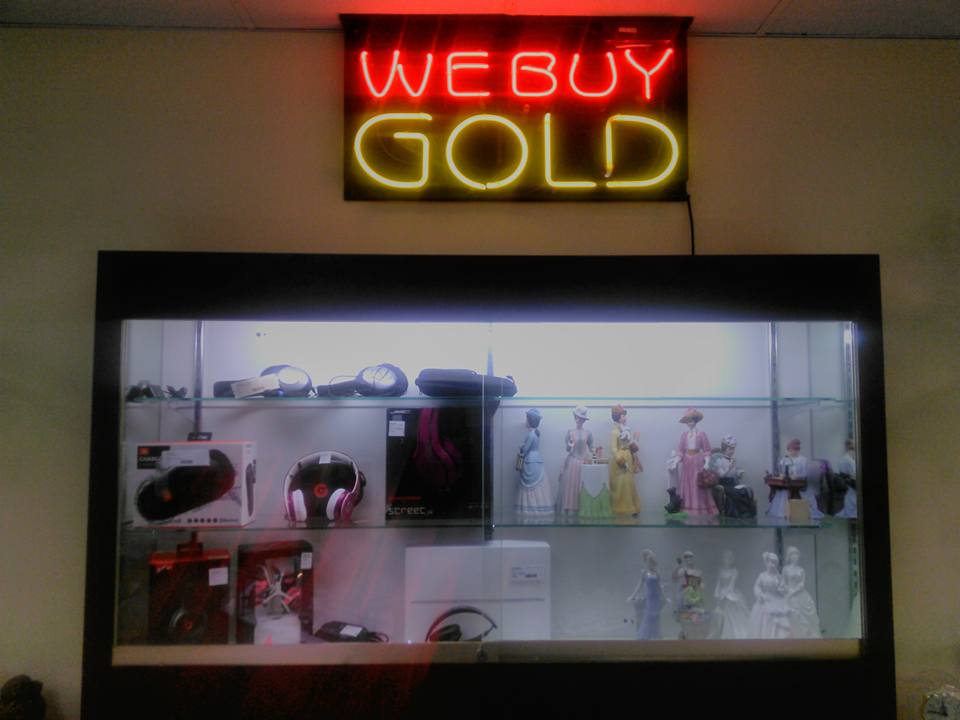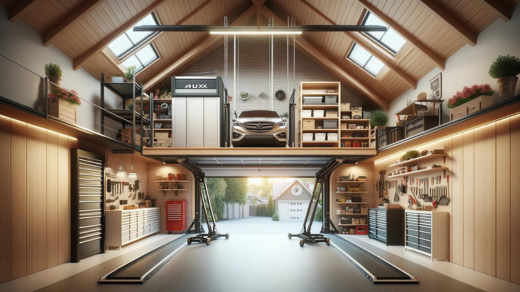The Hybrid Lithium Lighting Tower by Innov8 represents a cutting-edge solution for sustainable and efficient illumination. This article explores the innovative features of this green technology, highlighting its benefits for reducing carbon footprint and enhancing lighting performance in various applications.
INNOV8 Equipment is at the forefront of revolutionizing illumination technology with their Hybrid Lithium Lighting Tower. This eco-friendly innovation not only minimizes environmental impact but also optimizes lighting efficiency. Ideal for diverse settings, it showcases a blend of advanced engineering and sustainable design, paving the way for greener lighting solutions.
Introduction to Hybrid Lithium Lighting Tower
The introduction to hybrid lithium lighting towers marks a significant advancement in the field of sustainable and efficient lighting solutions for various outdoor applications. These innovative towers combine the power of lithium-ion batteries with traditional diesel generators to create a versatile and environmentally friendly lighting system. By integrating lithium batteries into the design, these towers can store excess energy generated by the diesel generator, allowing for more efficient use of fuel and reducing emissions. This hybrid system offers a reliable and continuous power supply for extended periods, making it ideal for use in construction sites, events, emergency situations, and other outdoor settings where reliable lighting is essential.
Moreover, the hybrid lithium lighting towers are designed to be portable and easy to deploy, making them a versatile solution for temporary lighting needs in remote locations or areas without access to the grid. The integration of lithium batteries enhances the tower’s energy storage capacity, enabling it to operate silently and with lower maintenance requirements compared to traditional diesel-powered lighting systems. This innovative technology not only reduces carbon emissions and fuel consumption but also provides a cost-effective and sustainable lighting solution for various industries and applications. The introduction of hybrid lithium lighting towers represents a significant step towards achieving more energy-efficient and environmentally friendly lighting solutions in outdoor settings.
Innov8’s Sustainable Lighting Solution
Innov8’s sustainable lighting solution revolutionizes the way we illuminate indoor spaces by combining cutting-edge technology with eco-friendly practices. By harnessing the power of energy-efficient LED lights, Innov8’s lighting solution significantly reduces electricity consumption while providing superior brightness and longevity. The use of LED lights not only lowers energy costs but also minimizes carbon emissions, making it an environmentally conscious choice for both residential and commercial settings. Innov8’s lighting solution is designed to be long-lasting, with LED bulbs lasting up to 25 times longer than traditional incandescent bulbs, reducing the frequency of replacements and contributing to a more sustainable lifestyle.
Moreover, Innov8’s sustainable lighting solution incorporates smart technology features such as motion sensors and dimmable options to further optimize energy usage. These features not only enhance user experience by providing customizable lighting settings but also contribute to energy conservation by automatically adjusting light levels based on occupancy and natural light levels. Innov8’s commitment to sustainability extends beyond energy efficiency, as the materials used in their lighting products are also chosen with environmental impact in mind. By prioritizing recyclable and eco-friendly materials in their manufacturing processes, Innov8 ensures that their lighting solutions are not only energy-efficient but also reduce waste and promote a circular economy.
Innov8 Equipment Hybrid Lithium Lighting Tower provides an advanced solution for various lighting needs incorporating sustainable technologies. By utilizing Innov8 Equipment Hybrid Lithium Lighting Tower, users benefit from reduced energy consumption and increased durability. This lighting tower emphasizes efficiency and sustainability, embodying Innov8’s dedication to eco-friendly innovations while delivering high performance and reliability in diverse applications.
Benefits of Hybrid Lithium Technology
Hybrid lithium technology offers numerous benefits that make it a preferred choice in various applications. One of the key advantages is its high energy density, which allows for more energy storage in a compact space. This feature is particularly valuable in electric vehicles, where space is limited and maximizing range is crucial. Additionally, hybrid lithium technology boasts a longer lifespan compared to traditional lead-acid batteries, reducing the frequency of replacements and lowering overall maintenance costs. This extended lifespan is also beneficial for renewable energy storage systems, ensuring consistent and reliable power supply over a longer period.
Another significant benefit of hybrid lithium technology is its fast charging capabilities. Lithium batteries can be charged at a much faster rate than lead-acid batteries, making them ideal for applications where quick recharging is essential, such as in electric vehicles or portable electronic devices. The rapid charging feature not only enhances user convenience but also promotes energy efficiency by reducing charging times and minimizing energy wastage. Moreover, hybrid lithium technology is known for its high efficiency and low self-discharge rate, ensuring that stored energy is effectively utilized and remains available when needed, making it a sustainable and reliable energy storage solution.
Features of the Green Illumination Choice
The Green Illumination Choice offers several key features that make it a standout option for various applications. Firstly, the green illumination provides a soothing and calming effect, making it ideal for environments where relaxation and focus are essential. This feature is particularly beneficial in settings such as bedrooms, offices, and therapy rooms where creating a tranquil atmosphere is important. Additionally, green light is known to be less harsh on the eyes compared to other colors, reducing eye strain and fatigue during extended use. This makes the Green Illumination Choice a practical option for spaces where individuals spend prolonged periods under artificial lighting.
Furthermore, the Green Illumination Choice boasts energy-efficient qualities, making it a sustainable lighting solution. Green LEDs consume less power compared to traditional lighting sources, resulting in lower energy bills and reduced environmental impact. This feature makes it an attractive choice for eco-conscious consumers looking to minimize their carbon footprint. Additionally, green light is versatile and can be easily integrated into smart lighting systems, allowing for customizable and programmable lighting options. This flexibility enables users to adjust the intensity and color temperature of the green illumination to suit their specific needs and preferences.
Environmental Impact of Hybrid Lighting Towers
Hybrid lighting towers have emerged as a sustainable alternative to traditional lighting systems, offering significant environmental benefits. These towers are equipped with a combination of solar panels, batteries, and diesel generators, allowing for efficient energy usage and reduced carbon emissions. By harnessing renewable energy sources such as solar power, hybrid lighting towers help to decrease reliance on fossil fuels and lower greenhouse gas emissions. This not only mitigates air pollution but also contributes to the global efforts to combat climate change. Additionally, the use of hybrid lighting towers can lead to a reduction in noise pollution, as these systems operate more quietly compared to traditional diesel-powered lighting towers. Overall, the environmental impact of hybrid lighting towers is positive, making them a sustainable choice for various outdoor lighting applications.
Furthermore, the adoption of hybrid lighting towers can have a positive impact on local ecosystems and wildlife. Traditional lighting towers powered by diesel generators can disrupt natural habitats and wildlife behavior due to noise and air pollution. In contrast, hybrid lighting towers operate silently and emit fewer pollutants, minimizing their impact on the surrounding environment. This is especially important in environmentally sensitive areas such as nature reserves, national parks, and wildlife habitats, where preserving the ecosystem is crucial. By choosing hybrid lighting towers for outdoor lighting needs, organizations and communities can demonstrate their commitment to environmental stewardship and responsible resource management. The environmental benefits of hybrid lighting towers extend beyond energy efficiency, offering a holistic approach to sustainability that prioritizes both ecological conservation and human well-being.
Applications of Hybrid Lithium Lighting Towers
Hybrid lithium lighting towers have found wide-ranging applications in various industries and sectors due to their energy efficiency and environmental friendliness. One of the key applications of these lighting towers is in the construction industry. Construction sites often require lighting for safety and productivity reasons, especially during night shifts or in poorly lit areas. Hybrid lithium lighting towers provide a reliable and cost-effective solution for illuminating construction sites without the need for traditional diesel-powered lighting systems. Their ability to operate quietly and emit minimal emissions make them ideal for use in urban construction projects where noise and air pollution are major concerns.
Another significant application of hybrid lithium lighting towers is in outdoor events and entertainment venues. Whether it’s a music festival, sports event, or outdoor wedding, having proper lighting is essential to create a safe and enjoyable environment for attendees. Hybrid lithium lighting towers can be easily deployed in remote locations without access to power grids, providing bright and reliable illumination for outdoor events. Their portability and ability to run for extended periods on a single charge make them a convenient lighting solution for event organizers looking to reduce their carbon footprint and operational costs while ensuring a well-lit and sustainable event environment.
Comparison with Traditional Lighting Systems
When comparing LED lighting with traditional lighting systems, several key differences become apparent. Firstly, LED lighting is known for its energy efficiency, consuming significantly less power than incandescent or fluorescent bulbs. This results in lower electricity bills and reduced energy consumption, making LED lighting a more sustainable option in the long run. Additionally, LED lights have a longer lifespan compared to traditional bulbs, lasting up to 25 times longer. This not only reduces maintenance and replacement costs but also contributes to a more environmentally friendly lighting solution by reducing waste.
On the other hand, traditional lighting systems like incandescent bulbs emit more heat, making them less efficient in converting energy into light. This can lead to higher cooling costs in indoor settings. Furthermore, traditional bulbs contain hazardous materials like mercury, which can be harmful to both human health and the environment if not disposed of properly. In contrast, LED lighting is mercury-free and emits less heat, making it a safer and more eco-friendly choice. Overall, the comparison between LED lighting and traditional lighting systems highlights the numerous advantages of LED technology in terms of energy efficiency, longevity, and environmental impact.
Innovations in Energy Efficiency and Performance
Innovations in energy efficiency and performance have been at the forefront of addressing the challenges of climate change and sustainability in recent years. One significant advancement is the development of smart grids, which utilize digital technology to optimize the distribution of electricity. These smart grids enable more efficient monitoring and management of energy consumption, allowing for better integration of renewable energy sources and reducing waste. Additionally, advancements in energy storage technologies, such as lithium-ion batteries and flow batteries, have revolutionized the way energy is stored and utilized, making renewable energy sources more reliable and accessible.
Furthermore, the rise of energy-efficient appliances and smart home technologies has transformed the way individuals and businesses consume energy. From energy-efficient LED lighting to smart thermostats that can adjust temperatures based on occupancy, these innovations have made it easier for consumers to reduce their energy consumption and lower their carbon footprint. Additionally, the integration of artificial intelligence and machine learning algorithms in energy management systems has enabled more precise forecasting of energy demand and optimized energy use, leading to significant improvements in energy efficiency and performance across various sectors. The continuous development and adoption of these innovative solutions are crucial in achieving a more sustainable and energy-efficient future.
Maintenance and Longevity of Hybrid Lighting Towers
Maintenance and longevity are crucial aspects to consider when investing in hybrid lighting towers. Regular maintenance is essential to ensure the efficient operation of the towers and to maximize their lifespan. This includes routine inspections of all components, such as the solar panels, batteries, LED lights, and diesel generator if applicable. Any issues should be promptly addressed to prevent further damage and costly repairs. Proper maintenance also involves cleaning the solar panels to ensure optimal energy generation and performance. Additionally, regular testing of the batteries and electrical system is important to identify any potential issues and prevent unexpected failures. By following a comprehensive maintenance schedule, hybrid lighting towers can operate at peak efficiency and have a longer service life.
The longevity of hybrid lighting towers is also influenced by factors such as the quality of components used, the environmental conditions in which they are deployed, and the frequency of use. Investing in high-quality components can significantly extend the lifespan of the towers and reduce the need for frequent replacements. Proper installation and placement of the towers can also impact their longevity, as exposure to harsh weather conditions or improper handling can lead to premature wear and tear. Choosing a reputable manufacturer that offers warranty and support services can provide added assurance of the longevity of the hybrid lighting towers. Regularly monitoring and assessing the performance of the towers can help identify any signs of deterioration early on, allowing for timely maintenance and repairs to prolong their lifespan.
Future Prospects and Trends in Green Lighting Technology
Green lighting technology is rapidly evolving, with exciting future prospects and trends on the horizon. One key trend is the increasing adoption of LED lighting, which is known for its energy efficiency and long lifespan. LED lighting is projected to continue gaining popularity due to its lower energy consumption, reduced maintenance costs, and versatility in design. Another promising trend is the development of smart lighting systems, which use sensors and controls to optimize energy usage based on occupancy, natural light levels, and user preferences. These systems not only enhance energy efficiency but also offer greater convenience and customization for users.
Furthermore, advancements in materials science are driving innovations in green lighting technology, such as the development of organic light-emitting diodes (OLEDs) and quantum dot LEDs. OLEDs offer the potential for flexible and transparent lighting solutions, while quantum dot LEDs provide improved color quality and efficiency. These emerging technologies hold promise for enhancing the sustainability and performance of lighting systems. Additionally, the integration of renewable energy sources, such as solar power, into lighting systems is expected to become more prevalent, further reducing the environmental impact of lighting. Overall, the future of green lighting technology is bright, with ongoing advancements paving the way for more efficient, sustainable, and customizable lighting solutions.





